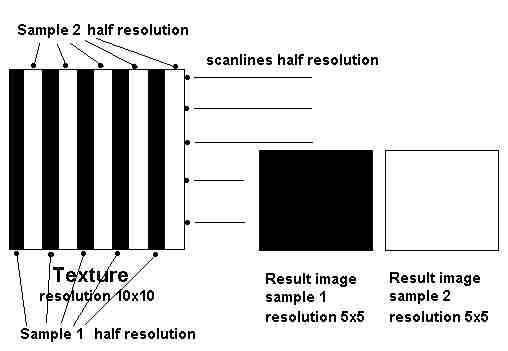In texture mapping spatial aliasing can appear when binary decisions are taken in sampling of the texture elements (texel).
The final image obtained by rendering a binary texture (sequence of black and white stripes of same size) using a sampling rate half the texture resolution (with starting offset 0 -sample1 and starting offset 1 -sample 2) is an aliased one color image (black and respectively white). The stripes details from the initial texture are missed by using the inadequate sampling rate.
The images obtained by slightly moving the viewing direction around the main direction, are blended together into a final antialised image. Highest number of blended images imply lowest rendering speed but highest quality of the final image.
A classic example of aliasing effect is shown in the following image:
 |

